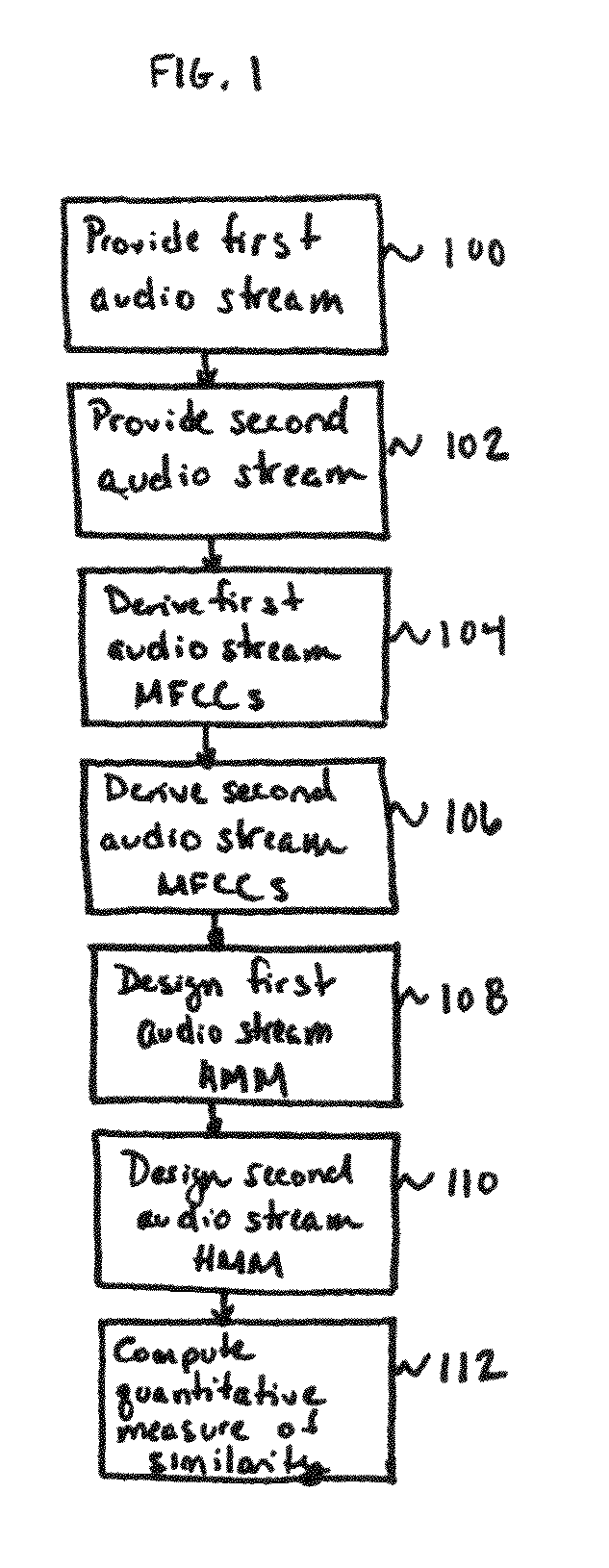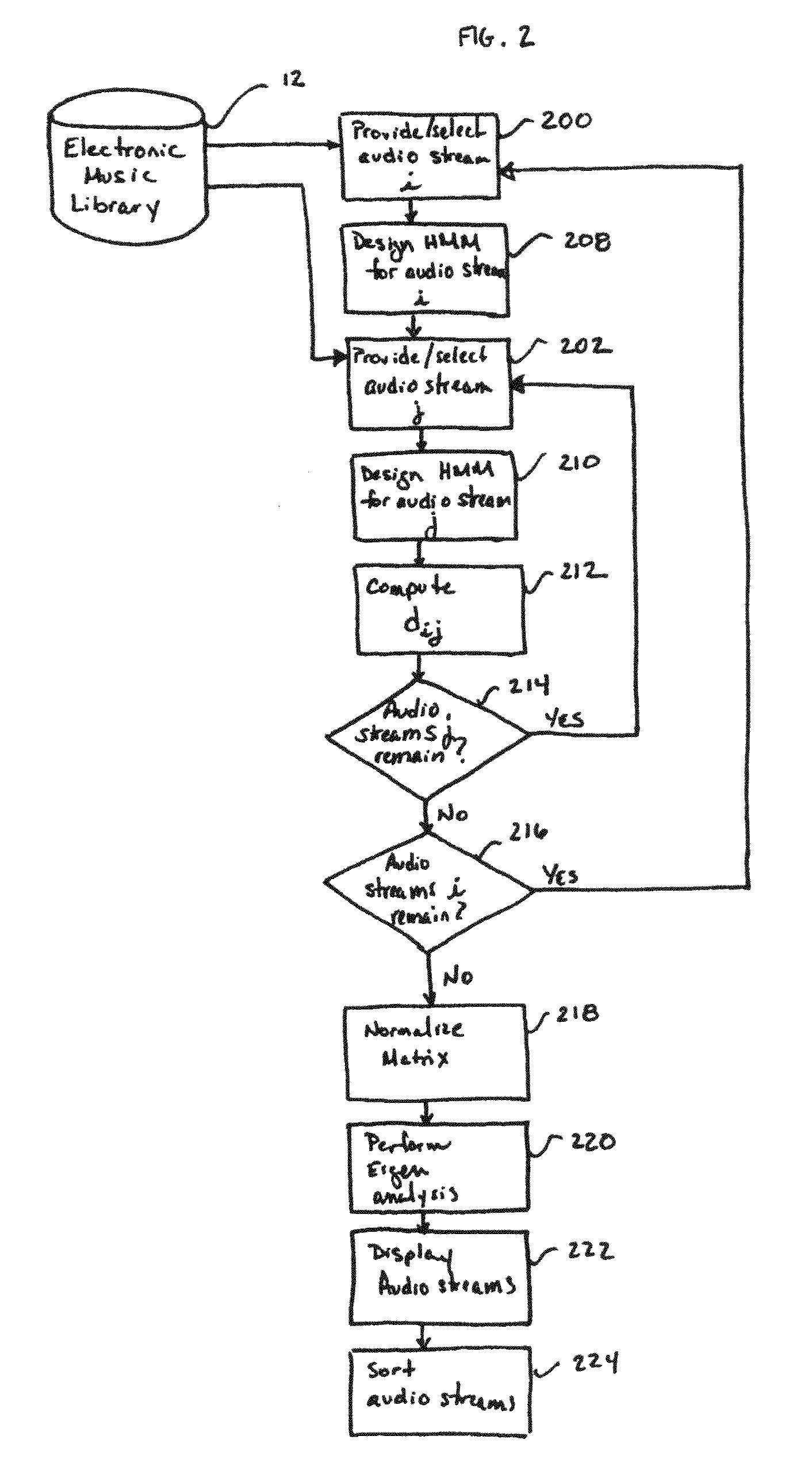System and method for quantifying, representing, and identifying similarities in data streams
a technology of data streams and systems, applied in the field of identifying similar data streams, can solve the problems of difficult for listeners and researchers alike to locate tracks of interest, methods that do not account for the dynamic—that is, time—evolving behavior of songs being modeled, and the wealth of available music poses challenges for listeners and researchers alik
- Summary
- Abstract
- Description
- Claims
- Application Information
AI Technical Summary
Benefits of technology
Problems solved by technology
Method used
Image
Examples
Embodiment Construction
[0071]The present invention provides a method and system for quantifying and representing similarities in data streams. The present invention can be practiced to good advantage, and will be described herein, in the context of sequential data streams. The term “sequential data stream” refers to a stream of time-evolving data. Thus, by way of example only, and without limitation, the term “sequential data stream” encompasses data streams such as audio streams (e.g., musical and spoken-word recordings), video streams, financial data streams (e.g., time-evolving profit data, price data, revenue data, or time-evolving data about the number of employees working for a particular company), and genetic data.
[0072]For the sake of explanation, the present invention will be described in connection with audio streams, and in particular in connection with musical recordings (e.g., tracks in a music library, including songs, spoken-word tracks, and the like). One of ordinary skill in the art will ...
PUM
 Login to View More
Login to View More Abstract
Description
Claims
Application Information
 Login to View More
Login to View More - R&D
- Intellectual Property
- Life Sciences
- Materials
- Tech Scout
- Unparalleled Data Quality
- Higher Quality Content
- 60% Fewer Hallucinations
Browse by: Latest US Patents, China's latest patents, Technical Efficacy Thesaurus, Application Domain, Technology Topic, Popular Technical Reports.
© 2025 PatSnap. All rights reserved.Legal|Privacy policy|Modern Slavery Act Transparency Statement|Sitemap|About US| Contact US: help@patsnap.com



